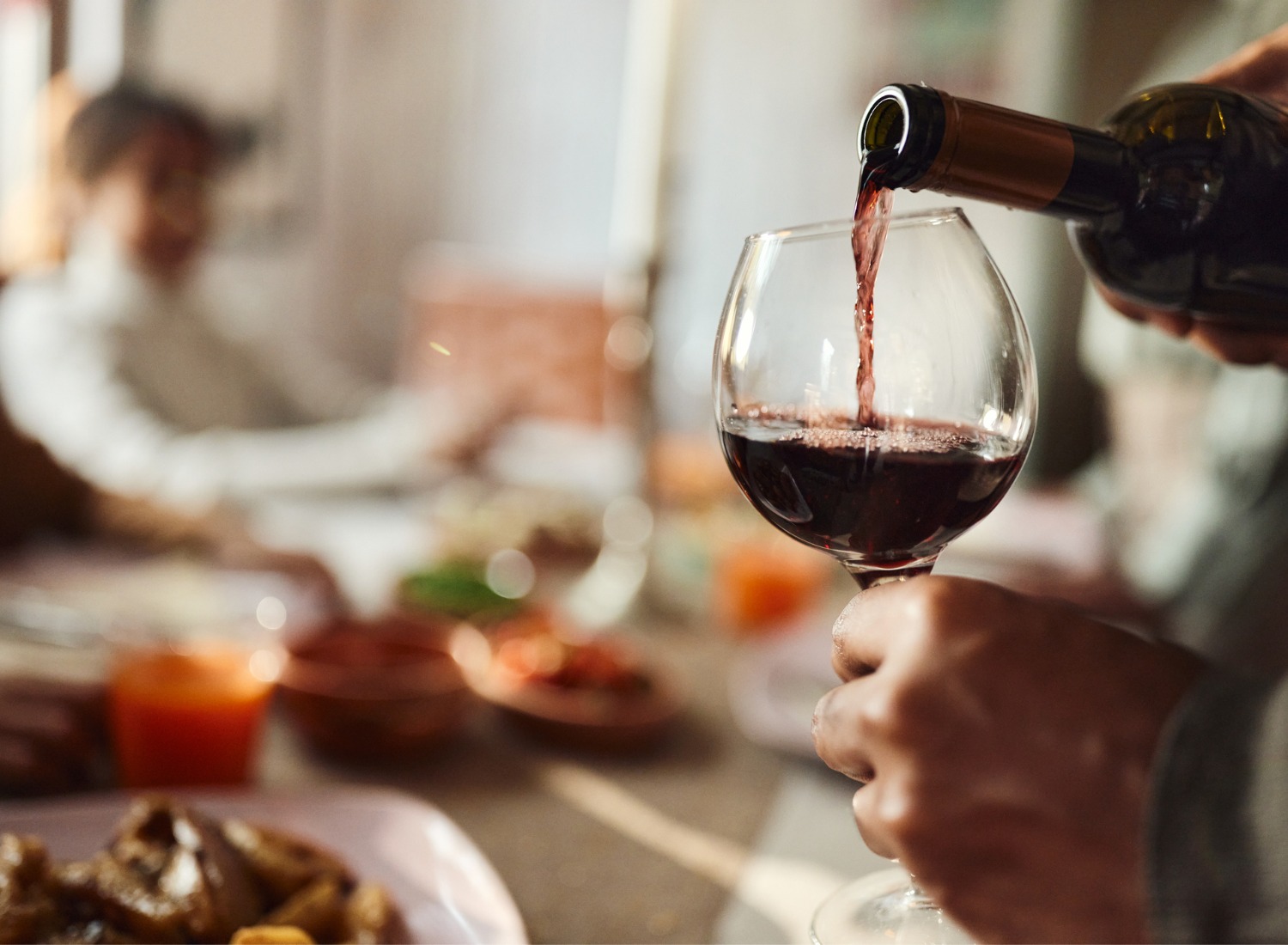Hosting 101: How Many Glasses of Wine in a Bottle?

Whether you’re throwing a dinner party or celebrating a special occasion, being adequately prepared is essential to make sure your event goes smoothly. Having enough wine on hand is an absolute must, but how do you know if you’ve got enough servings to satisfy all of your guests?
In this blog, we’ll embark on a journey to demystify the art of serving wine, reviewing how many servings you can expect to get out of each bottle and various factors that can impact the overall serving count. By the time you’re done reading, you’ll feel well-prepared to host your next gathering with confidence.
Factors That Affect Wine Glass Count
The number of glasses of wine you can pour from a bottle depends on several factors:
- Glass size: The size of your wine glasses plays a significant role. Standard wine glasses hold about 5 ounces (150 milliliters) of wine, while larger glasses can hold up to 12 ounces (355 milliliters) or more. Using smaller glasses will naturally yield more servings per bottle.
- Wine type: Different types of wine have different serving sizes. For example, a standard red or white wine bottle contains 750 milliliters (25.4 ounces), while sparkling wine or Champagne bottles also hold 750 milliliters. Dessert wines, on the other hand, are typically served in smaller 375-milliliter bottles.
- Pour size: How much wine you pour into each glass matters. A standard serving size is about 5 ounces, but some hosts may pour more generously. The pour size can affect how many glasses you get from a bottle.
- Bottle size: Wine bottles come in various sizes, which can significantly impact the number of glasses you can pour. Common bottle sizes include the standard 750-milliliter bottle, the Magnum (1.5 liters), and the Jeroboam (3 liters).
Standard Bottle Size
Let’s start with the standard bottle size, which holds 750 milliliters or approximately 25.4 ounces of wine. Considering a standard 5-ounce pour for each glass, you can expect to get around five glasses of wine from one bottle. This is the typical calculation you’ll find at most wine-related events.
However, remember that some people prefer larger pours or have larger wine glasses, so you might get closer to four glasses if you’re pouring more generous servings. Conversely, with smaller glasses or more conservative pours, you could stretch a bottle to serve six or more glasses.
Larger Bottle Sizes
If you’re hosting a larger gathering or want to ensure you have plenty of wine, you might opt for a larger bottle size. Two common larger bottle sizes are the Magnum and the Jeroboam.
- Magnum: A magnum bottle contains 1.5 liters of wine, which is equivalent to two standard bottles. With a magnum, you can expect to pour approximately ten 5-ounce glasses of wine.
- Jeroboam: A Jeroboam bottle holds 3 liters of wine, equivalent to four standard bottles. This size can provide around 20 glasses of wine with 5-ounce pours.
Keep in mind that these larger bottles often make a grand impression at gatherings and can be an excellent choice for special occasions.
Serving Dessert Wines and Fortified Wines
Dessert wines and fortified wines like Port and Sherry are typically served in smaller bottles. These wines are richer and sweeter, and the serving size is often smaller as well. A standard bottle of dessert wine contains 375 milliliters or 12.7 ounces, yielding approximately six to eight 2-ounce pours.
When serving dessert wines or fortified wines, consider the smaller serving size and choose appropriate glassware to enhance the tasting experience.
Adjusting for Your Guests and Event
The number of glasses of wine you can pour from a bottle is not set in stone—it’s adaptable to your guests and the nature of your event. Here are a few tips to consider:
- Guest preferences: Take into account the preferences of your guests. If they are enthusiastic wine drinkers, you may want to pour more generously or have extra bottles on hand.
- Glass size: Choose wine glasses that match the style of your event. Smaller glasses can help ensure that you have enough wine to go around.
- Wine variety: Different wines have distinct characteristics. For example, you may be able to pour a full-bodied red in smaller servings than a lighter white wine. Adjust your pour size accordingly.
- Backup bottles: It’s always a good idea to have a few backup bottles on hand, especially if you’re hosting a larger gathering or an event where wine is a significant part of the experience, along with a quality wine opener.
- Variety of wines: Consider offering a variety of wines to cater to different tastes. This can help ensure that all your guests have a wine they enjoy.
Conclusion
The question of how many glasses of wine you can pour from a bottle has no one-size-fits-all answer. It depends on various factors, including the size of the bottle, the type of wine, the size of the glasses, and the pour size. As a host, balancing these variables to ensure your guests have an enjoyable and memorable wine experience is essential.
Ultimately, the key is to gauge the preferences and expectations of your guests and adjust your serving style accordingly. Whether you’re pouring five or ten glasses from a bottle, the most important thing is to create an atmosphere where everyone can relax, savor the wine, and share in the joy of your gathering. Cheers to hosting memorable events with the perfect pour!
